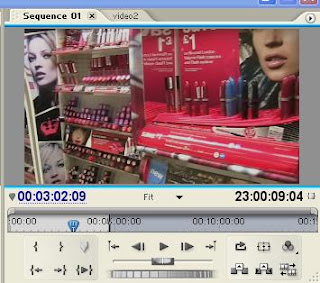Cutaways
Speech Debelle, Album Speech Therapy: Channel 4 Documentary
http://www.youtube.com/watch?v=qChFlX7y2a0
Interviews

 Our Documentary
Our Documentary
Graphics
Freddie's Loves - Channel 5
http://www.youtube.com/watch?v=dsJyk3nH0jQ
Vox Pops
Hungry Beast, Ep 6: Vox Pops, Body Image
http://www.youtube.com/watch?v=bV8NaxJyI08
Video Transitions
Fade to black From Russia with Hate
http://www.youtube.com/watch?v=aLUxuq-E9yA


 Our Documentary
Our Documentary


The Day I Died. NDE + Consciousness Documentary Pt1 of 6
http://www.youtube.com/watch?v=_I9-XxBAEsQ



Our Documentary

Archive Material
Music

 2. How efective is the combination of your main product and ancillary texts?
2. How efective is the combination of your main product and ancillary texts?  The voice over in our documentary uses standard English however, the accent is not daunting and has a very relaxed and informal tone to help appeal to the audience.
The voice over in our documentary uses standard English however, the accent is not daunting and has a very relaxed and informal tone to help appeal to the audience.
The target audience which we decided to aim our documentary at is 16-25 and personally, i myself do not know anyone who reads broadsheet newspapers. Therefore we are aiming to advertise our documentary in tabloid newspapers such as: 'The Daily Telegraph', 'News of the World', 'Daily Mail', 'The Sun', 'Daily Mirror', 'Sunday Mirror' and the 'Metro'.
The picture below demonstrated how I printed out the advert in different sizes and glued them into newspapers to get an idea of what it would look like.
Because our documentary is to be broadcast on Channel 4, we are unable to advertise it on BBC radio stations. We have therefore chosen national commercial radio stations such as 'Absolute Radio' and 'Heart FM' as well as popular local radio stations across the country.
North: TFM East: Radio Norwich South: Radio-Now West: Radio City The picture below shows the scheduling for Absolute Radio. The Arrow is pointing to 5 o clock, this is known as 'Drive Time' and is when our radio trailer will be played the most.
The picture below shows the scheduling for Absolute Radio. The Arrow is pointing to 5 o clock, this is known as 'Drive Time' and is when our radio trailer will be played the most.
Our group asked a focus group of 20 to watch our documentary and then give us feedback at the end. Along with the short video I have created, the following answers and statistics were given.

2. Do the first 5 minutes make you want to watch the rest of the documentary? Why?

Hannah Heffernan, 17, Student
"definately. The interviews looked really genuine, especially Manda's reaction to when she was asked to take her make up off, if that wasn't scripted (which it doesn't look like it was) it's a really interesting thing to put in"
80% said yes, that the first five minutes does make them want to watch the rest of the documentary
20% said no because they said they are not really interested in make up but they said they would be interested in the other episodes in the series.

"I think the main image in the print advert is really striking and it really grabbed my attention. I would want to watch the documentary yes, because I'm interested in which sin i am most likely to be!" 60% of the focus group said that it was the radio trailer that really made them interested in the documentary

4.How did you use media technologies in the construction and research, planning and evaluation stages?
 A: For editing we used Adobe Premier Pro. We used this for both our documentary by capturing the footage and editing it by cutting/slicing/speeding up/slowing down we were also able to edit the sounds either by turning up or turning down the volume.
A: For editing we used Adobe Premier Pro. We used this for both our documentary by capturing the footage and editing it by cutting/slicing/speeding up/slowing down we were also able to edit the sounds either by turning up or turning down the volume.
B: B shows the programme Adobe Photoshop. This was very important when we were creating our print advert (see codes and conventions of a print advert)
C: The digital camera was integral when making our documentary. First of all we needed to actually prove it was us who was creating the documentary and so we used the digital camera to take pictures of us filming interviews and cutaways. The camera was also very important for our print advert.
D: This is a voice recorder. I used this to record interviews and also when creating my evaluation I wanted to add a variety of media and so I recorded myself evaluating myself.
E: Without the digital camera the whole documentary would not have been at all possible. We used this to film the documentaries and cutaways. We used the zoom in and zoom out to record pictures. We used the tripod to keep the camera steady, the adjustable legs came in handy as the interviews were filmed on different levels. 
- I also used my own personal camera, a Sony Cybershot.
- The internet was a useful source in terms of research and taking clips and pictures from websites such as Google Images and YouTube.
- I used Window's Movie Maker for my coursework. For example, when I asked my audience for feedback I recorded their answers and then placed them into Windows Movie Maker and added the audience's photo's as well as their details.
To add to my evaluation, I recently found out that on the History Channel there was a documentary based on the Seven Deadly Sins with the idea similar to ours - that each sin will be viewed on a different episode each week. However, the target audience was evidently different to ours as the information was more based on the history and religous side of the sins.































